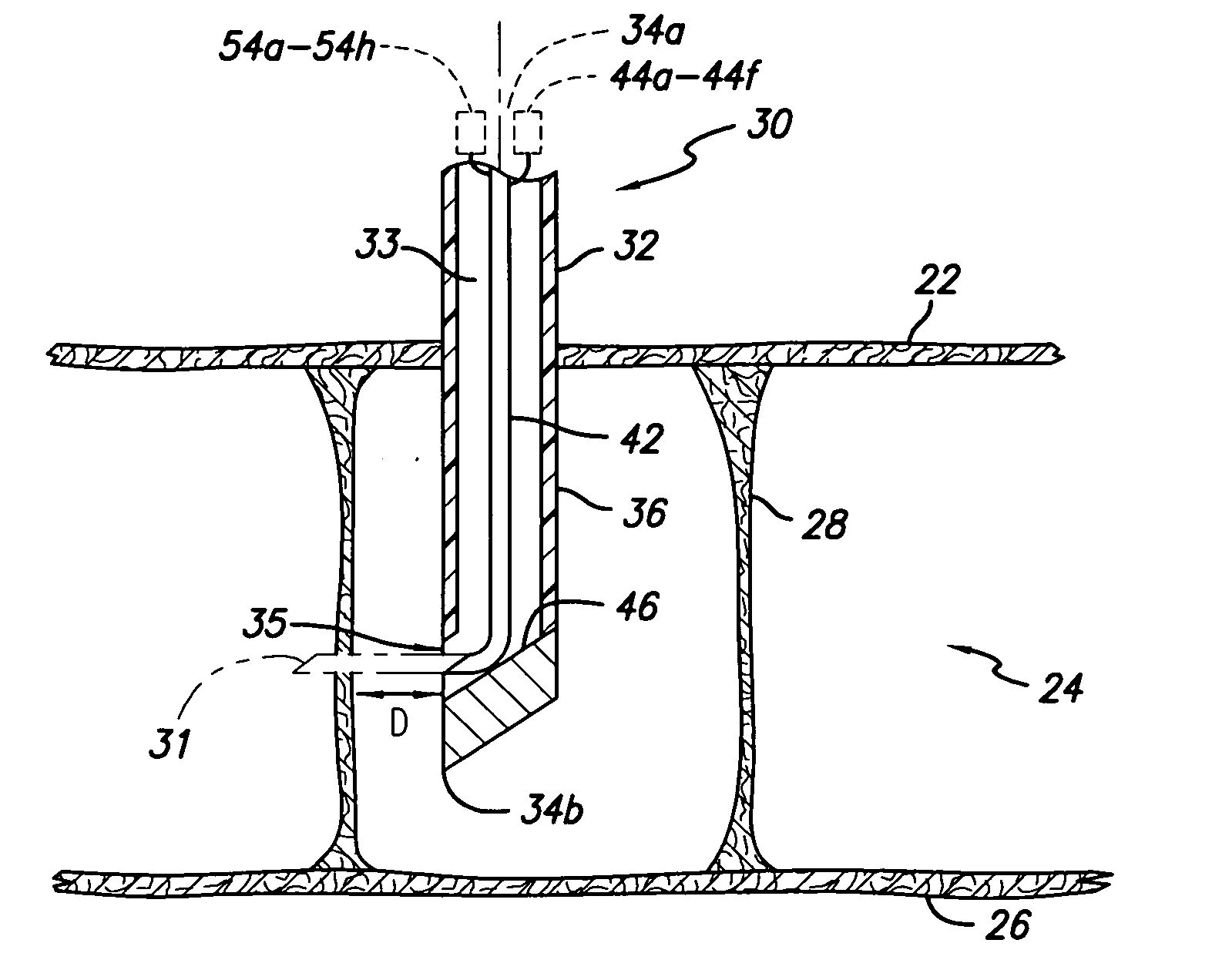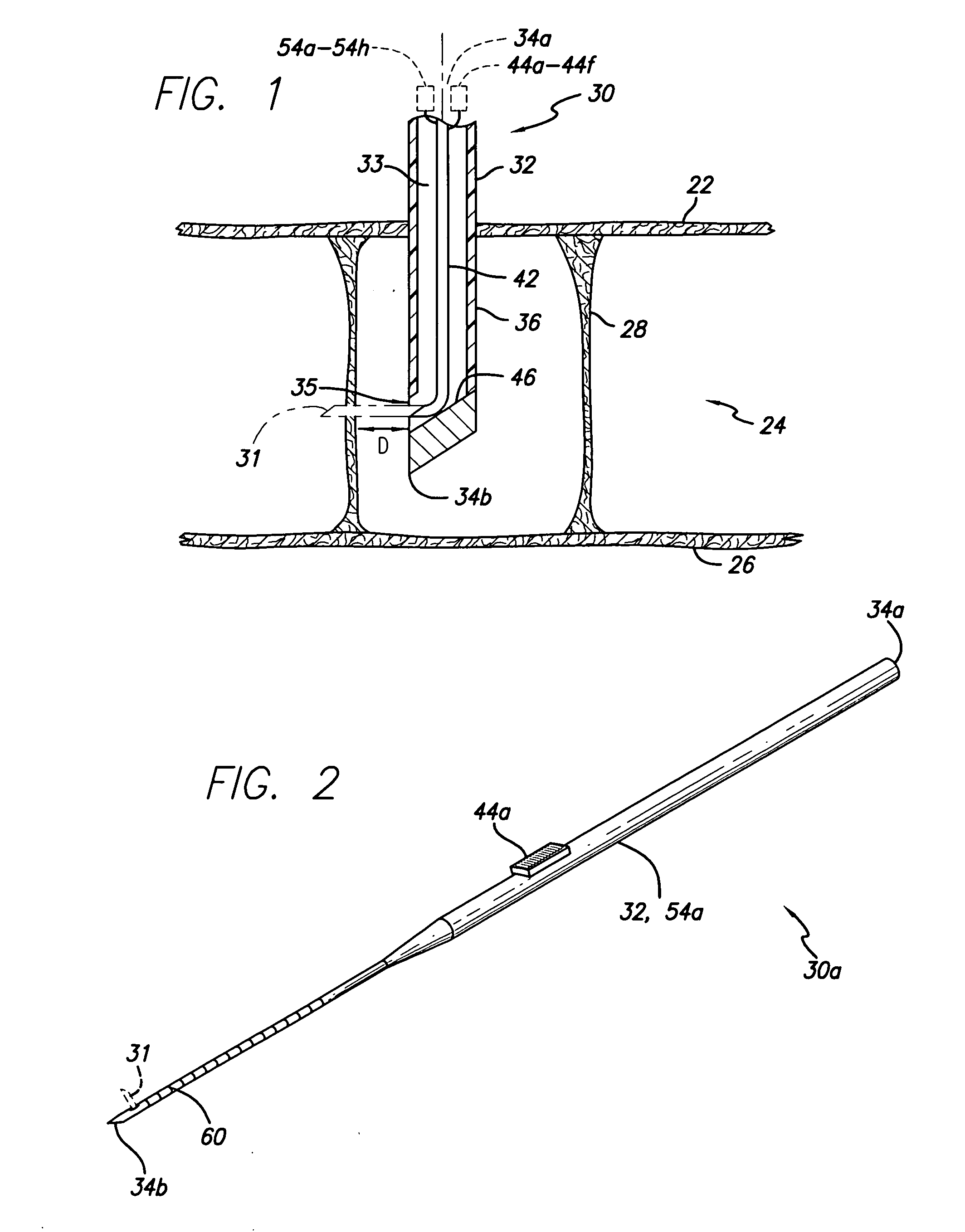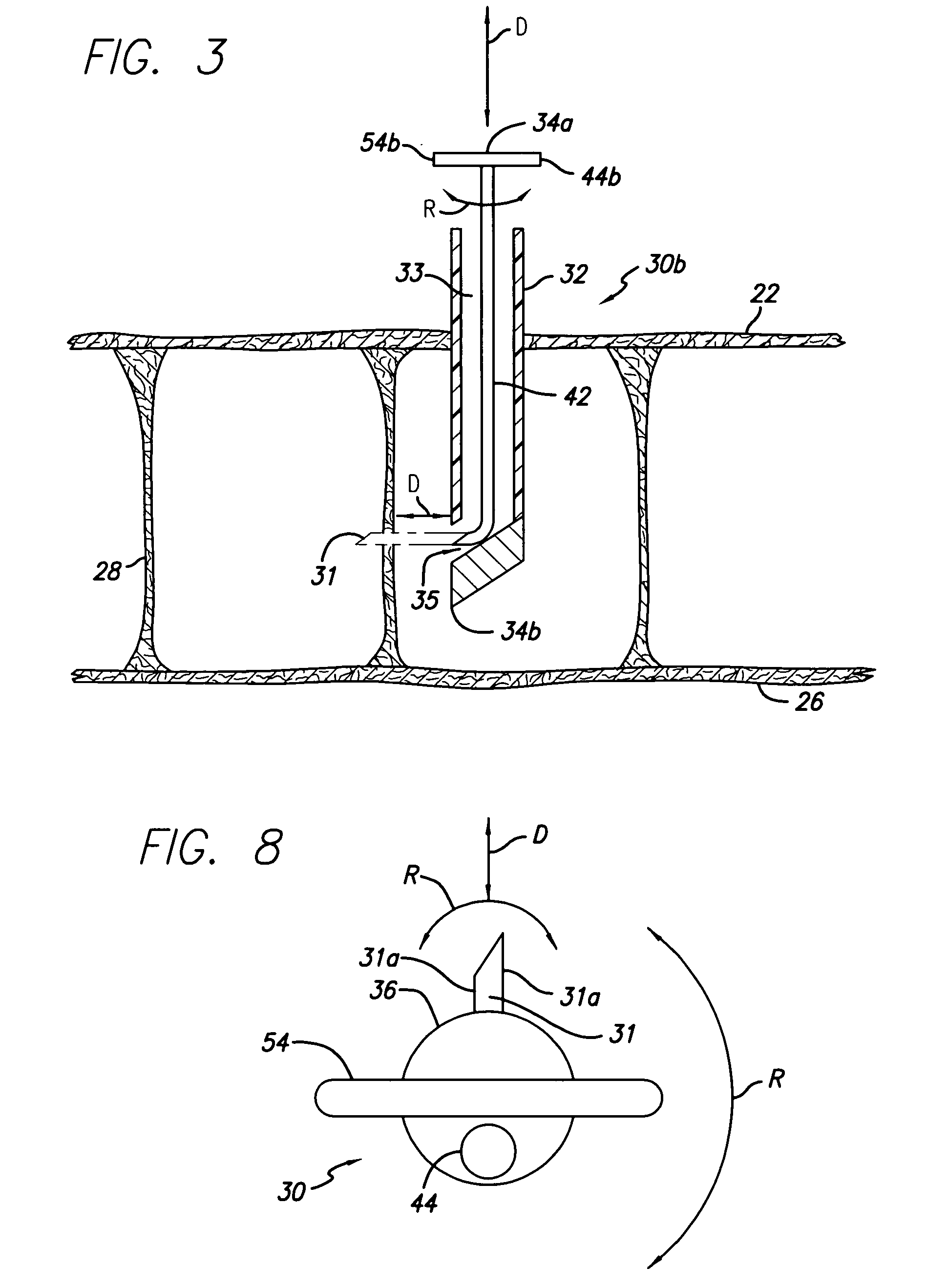Percutaneous cellulite removal system
a cellulite removal and percutaneous technology, applied in the field of percutaneous cellulite removal system, can solve the problems of not using an instrument, affecting the effect of any of these methods, and worsening the appearance of the skin
- Summary
- Abstract
- Description
- Claims
- Application Information
AI Technical Summary
Benefits of technology
Problems solved by technology
Method used
Image
Examples
second embodiment example
[0058] Referring to FIG. 3, a second exemplary preferred embodiment of the present invention of the percutaneous cellulite removal needle 30b includes a flexible and retractable blade 31 that is connected directly or indirectly to a handle 44b, 54b that serves both as the situating mechanism 44b and the actuating mechanism 54b. In this embodiment the lateral aperture 35 is an elongated slot perpendicular to the longitudinal axis of the needle 30. By pushing the handle up and down it acts as the situating mechanism 44b that controls the transition of the flexible blade 31 between a retracted position and the cutting position (in phantom). In this embodiment the body 32 is held in place and, by rotating the handle 54b it acts as the actuating mechanism 54b and moves the blade 31 within the elongated slot lateral aperture 35. Alternatively, the body 32 may be rotated to act as the actuating mechanism 54b.
third embodiment example
[0059] Referring to FIG. 4, a third exemplary preferred embodiment of the present invention of the percutaneous cellulite removal needle 30c includes a flexible and retractable blade 31 within a chamber. At the closed proximal end 34a of this embodiment is a T-handle 54c that serves as the actuating mechanism. A separate situating mechanism such as a dial 44c is preferably connected directly or indirectly to the flexible blade 31 and may be moved (perhaps by rotating) between two positions to control the transition of the flexible blade 31 between a retracted position and the cutting position. Rotating the T-handle 54c while the flexible blade 31 is in the cutting position causes the blade 31 to rotate and sever fibrous bridges 28. The embodiment shown in this figure also includes an optional cover 52 that covers the lateral aperture 35. In one preferred embodiment, cover 52 helps hold flexible blade 31 in a substantially perpendicular cutting position by providing a perpendicular ...
PUM
 Login to View More
Login to View More Abstract
Description
Claims
Application Information
 Login to View More
Login to View More - R&D
- Intellectual Property
- Life Sciences
- Materials
- Tech Scout
- Unparalleled Data Quality
- Higher Quality Content
- 60% Fewer Hallucinations
Browse by: Latest US Patents, China's latest patents, Technical Efficacy Thesaurus, Application Domain, Technology Topic, Popular Technical Reports.
© 2025 PatSnap. All rights reserved.Legal|Privacy policy|Modern Slavery Act Transparency Statement|Sitemap|About US| Contact US: help@patsnap.com



